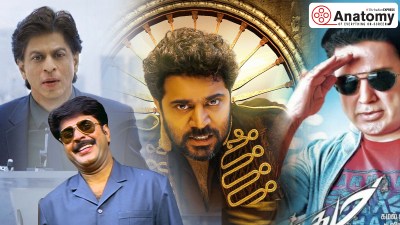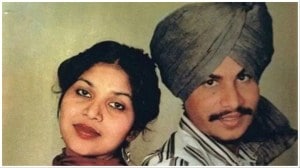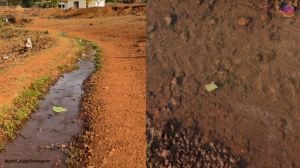- India
- International
‘If I did not explore art, my life would remain unfulfilled’: Lalu Prasad Shaw
Borrowing from Indian traditions and contemporary ethos, a recent Kolkata exhibition brought together over five decades of veteran artist Lalu Prasad Shaw’s works
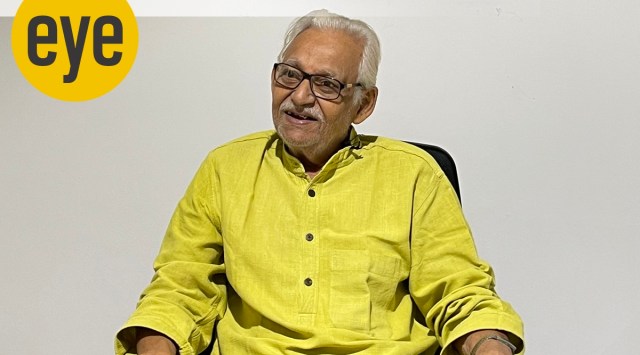 Lalu Prasad Shaw (Photo courtesy Gallery Art Exposure)
Lalu Prasad Shaw (Photo courtesy Gallery Art Exposure)You started at the age of 30 and have constantly experimented with mediums, from gouache and printmaking to tempera. Can you tell us about this need to experiment?
The mediums I’ve used best fit my need for both expression and sustenance at the time. In art college (Government College of Art and Craft, Kolkata), I switched from a course called commercial art to painting, where I gained skills across various mediums — experimentation was a natural part of the learning.
I ventured into printmaking after seeing a graphic arts show in the late ’60s, organised by Kekoo Gandhy of Chemould Gallery. I also loved the works of the abstractionist Sailen Mitra. However, graphics required costly material and didn’t really sell at the time. I didn’t have the means to continue printmaking after 1973. So, I shifted focus to tempera in the late ’90s.
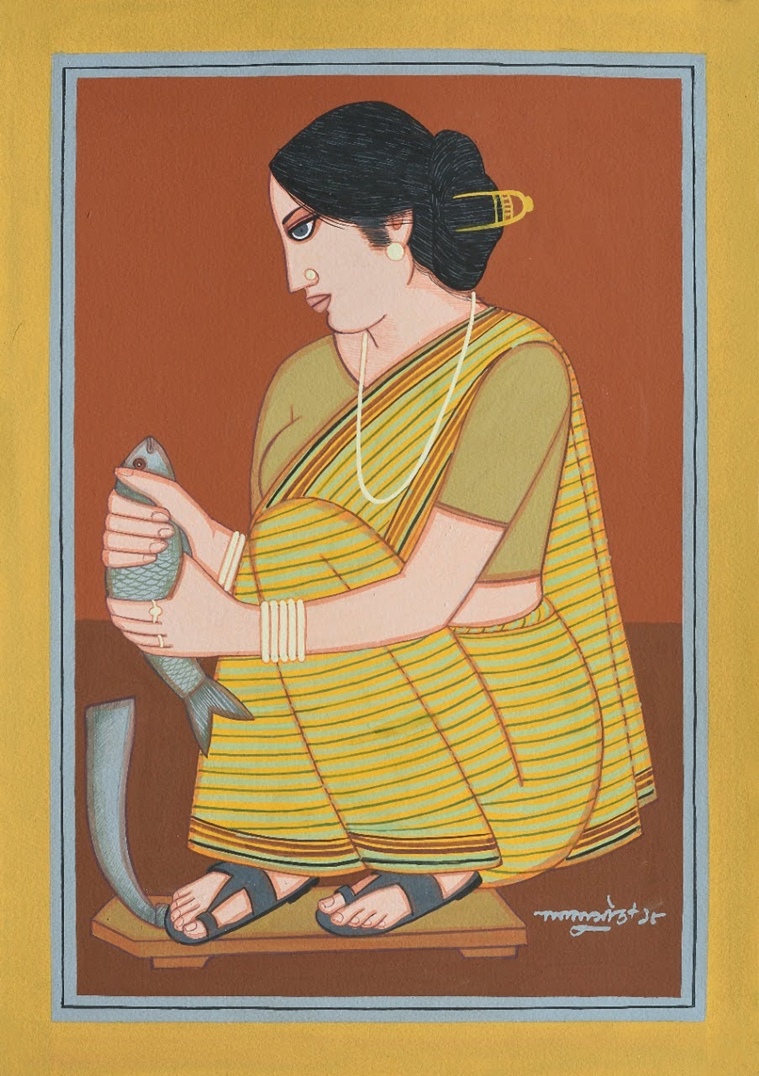 Untitled, Tempera on Board, 21” x 15”, 2018 (Photo courtesy Gallery Art Exposure)
Untitled, Tempera on Board, 21” x 15”, 2018 (Photo courtesy Gallery Art Exposure)
The exhibition also includes your early fine-line drawings. Tell us about those.
Minute patterns and fine lines always fascinated me. I admired the works of Jamini Roy, particularly those that were inspired by Kalighat paintings. Even in my paintings, you will see heavy emphasis and distinct demarcation of lines.

Since the late ’90s, you have worked on the “Babu–Bibi” series — an idea that came from teaching at Santiniketan — on Bengali babus in dhotis, and the ladies decked up in saris.
I was in Santiniketan for two decades or so, studying and then later, returned to teach and practise my art. Photography stalls were very popular, especially during Poush Mela; I was struck by the idea. I saw families and couples flock to them. I thought, why not create paintings from scenes I see in the photos on display? That’s when I first started painting with temperas.
 From his ‘Babu-Bibi’ series (Photo courtesy Gallery Art Exposure)
From his ‘Babu-Bibi’ series (Photo courtesy Gallery Art Exposure)
The stark realism in your paintings is in contrast to your graphics and drawings that are most often surreal and distorted. Was it a deliberate distinction?
Both styles are very close to my heart. My affinity for abstractionism was channelised through my graphic prints, which I made during some very trying as well as hopeful points of my life. My first graphic works from 1966 were a marker of sickness and political turmoil, while also seeing me through to happier times. On the other hand, my observations of the lives of ordinary people around me, with their quirks, drama, foibles and routines, had to be in full of colour and distinct lines; I suppose these choices were initially subconscious.
If you could talk about your love for Kolkata and how that has been part of your pictorial story.
I was born and brought up in Bengal; Kolkata is home. It is an essential part of me just as I am of it. I have always been drawn to its people, its culture and politics. There is no separating Kolkata from me — it is very much a part of my psyche.
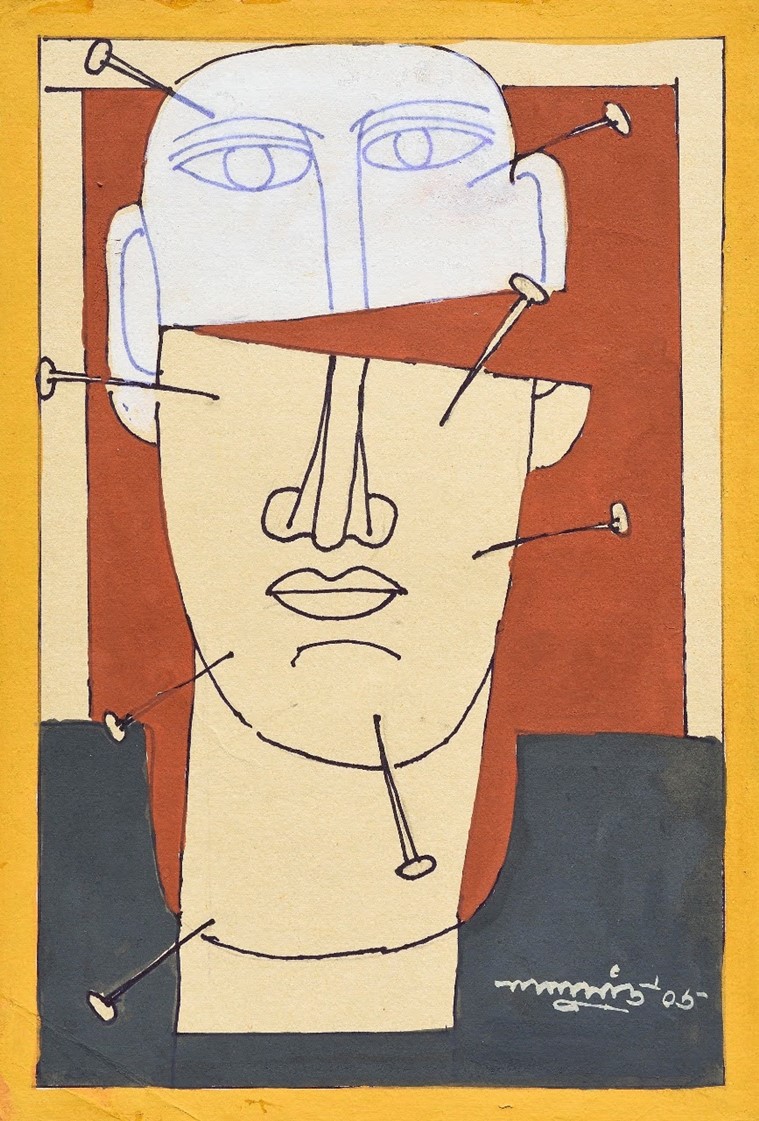 Untitled, Mixed Media on Board, 11” x 8”, 2006 (Photo courtesy Gallery Art Exposure)
Untitled, Mixed Media on Board, 11” x 8”, 2006 (Photo courtesy Gallery Art Exposure)
How did your teachers influence you?
I had joined a group called the Society of Contemporary Artists in the late ’60s, where I delved into my fascination for printmaking at length. It was artist Sanat Kar who actually encouraged me to try my hand at making graphic prints. My colleague Suhas Roy had come back from Paris full of new ideas and techniques, and helped me learn the process of etching. Ajit Gupta was my teacher during first year college and quickly became one of my favourites thereafter. I loved both his teaching and artistic style, and wanted to imbibe as much as I could from him. Much later, I carved out time on the weekends to master the art of painting, using temperas, under his guidance, after I had returned to Santiniketan.
What were the influences from your growing up in Birbhum, where you observed the malakars work on Sholapith craft and sculpt idols of Goddess Durga?
Yes, that is what first prompted me to pursue art as a subject. In my painting course I could explore a variety of mediums, including clay modelling. Malakars and sculptors, deftly shaping what became idols, had much to do with this. What I learnt from Kalighat and Ajanta paintings still influence my tempera paintings, as well as line drawings.
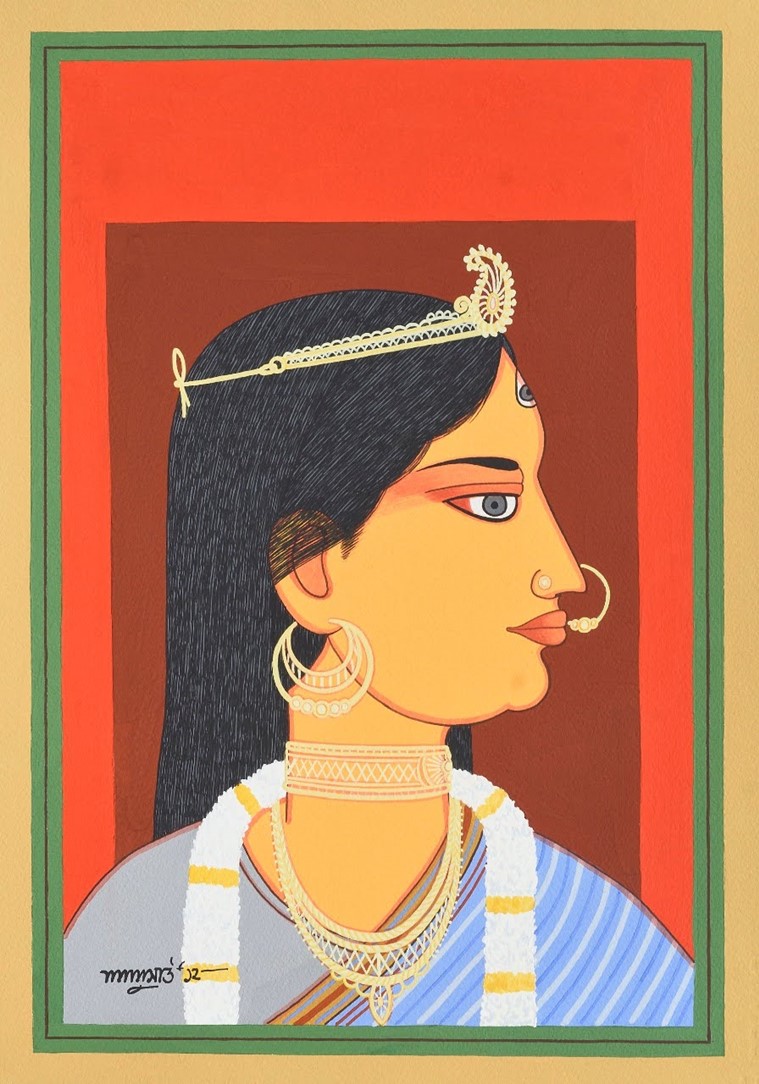 Durga, Tempera on Board, 21” x 15”, 2012 (Photo courtesy Gallery Art Exposure)
Durga, Tempera on Board, 21” x 15”, 2012 (Photo courtesy Gallery Art Exposure)
There was a period when you drew drawings of birds, capturing their movements, and preferred decorative borders. Were those inspired by Mughal miniatures?
There was a little garden right outside my window in Santiniketan, which I tended to myself. It gave me the pleasure of a beautiful view from my studio. Birds would often pay a visit, and I took the opportunity to draw and paint while admiring them. Several of my birds and still life scenes were drawn from that garden.
Was your family supportive of your decision to join art college in 1954? Could you talk about the driving factors?
My family was not particularly supportive of that decision. This was not surprising as the field of arts was not known to be exceptionally lucrative. Financial constraints did not allow me to go beyond and dabble in what was considered frivolous. However, it was my calling for a very long time and I knew that if I did not explore art, my life would remain unfulfilled and no other success would hold any meaning. So, I pressed on.
You are 89 and have been an artist for over five decades now, what’s the legacy you want to leave behind? What are your thoughts on art in India today?
From what I can see, contemporary art in India has taken some new and very interesting turns. However, something I would always tell my students and continue to believe in is that it is very important to create and develop one’s own style of artistic expression rather than blindly aping what seems to be trending. Definitely explore different concepts and keep pushing the boundaries, but always remember to channel your own authentic voice when creating — this is one of my key principles.
Apr 26: Latest News
- 01
- 02
- 03
- 04
- 05











